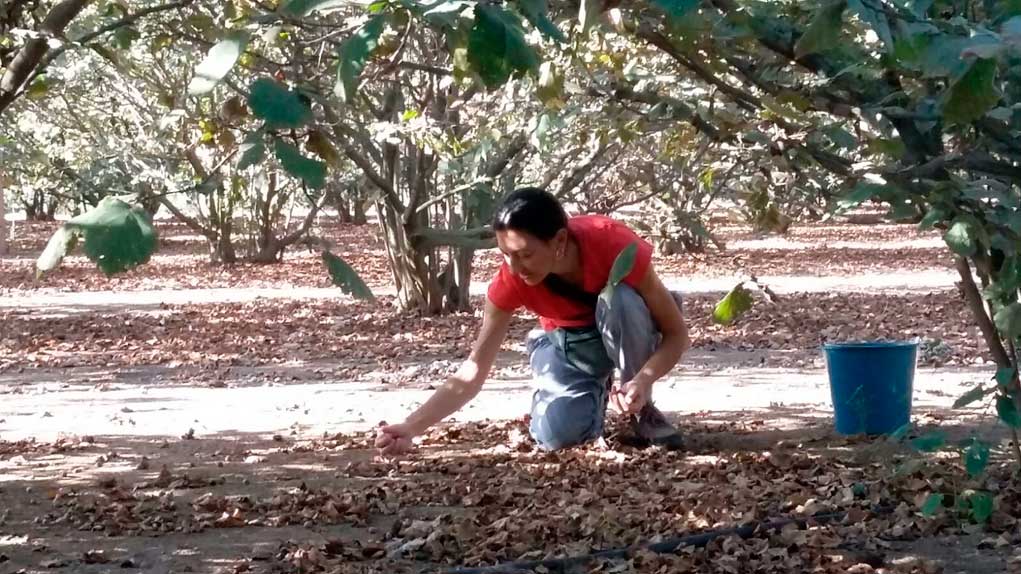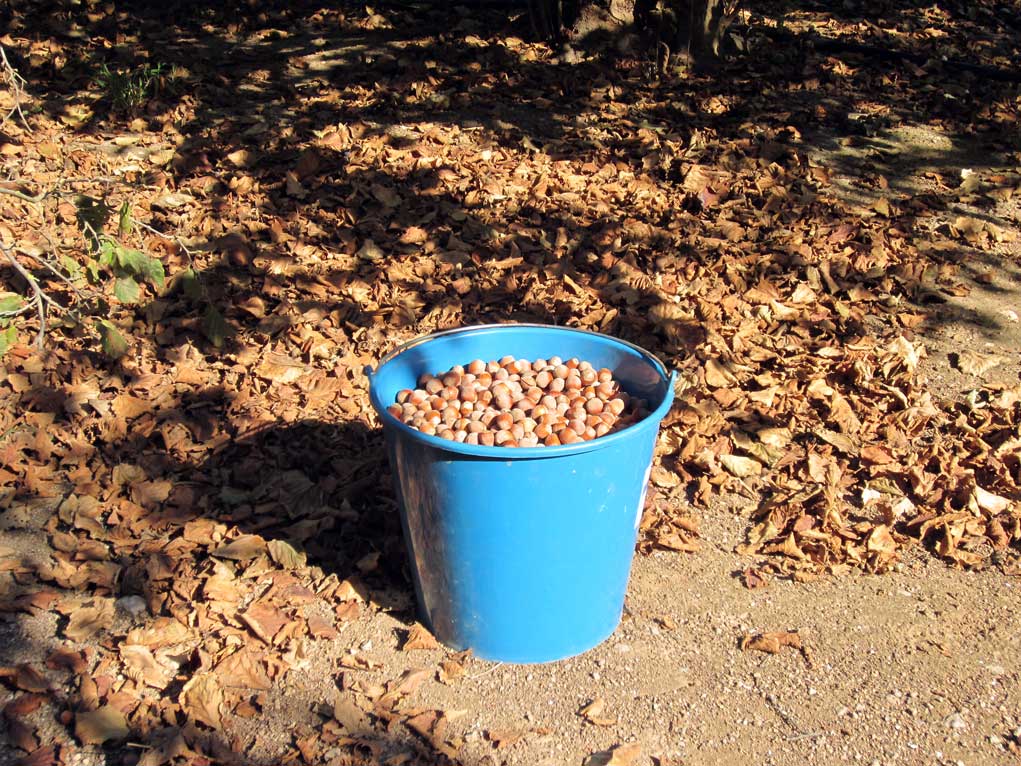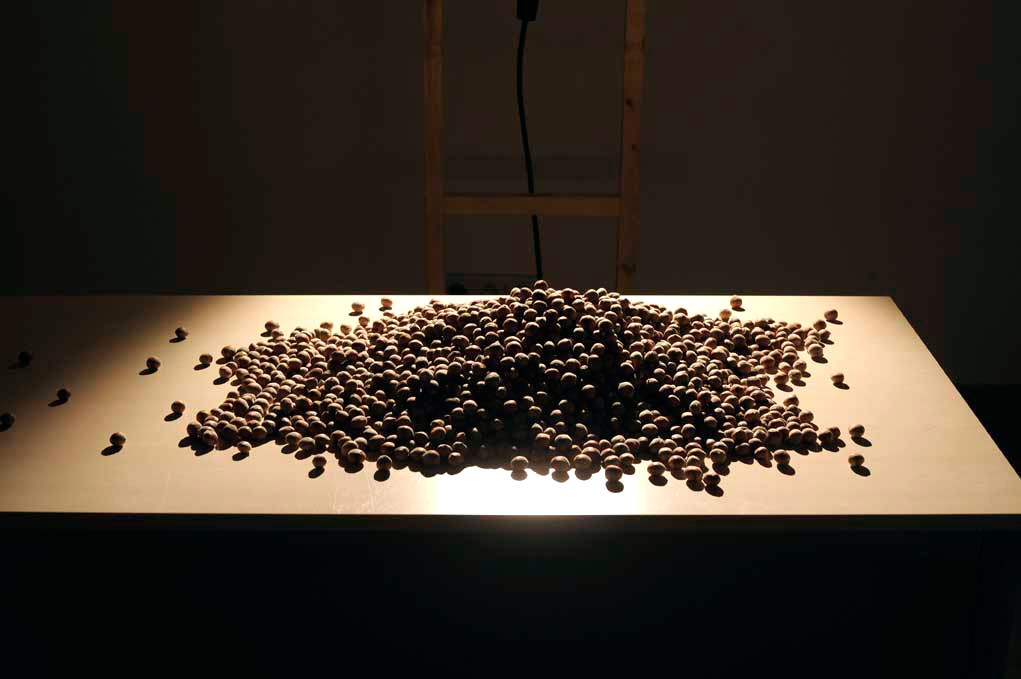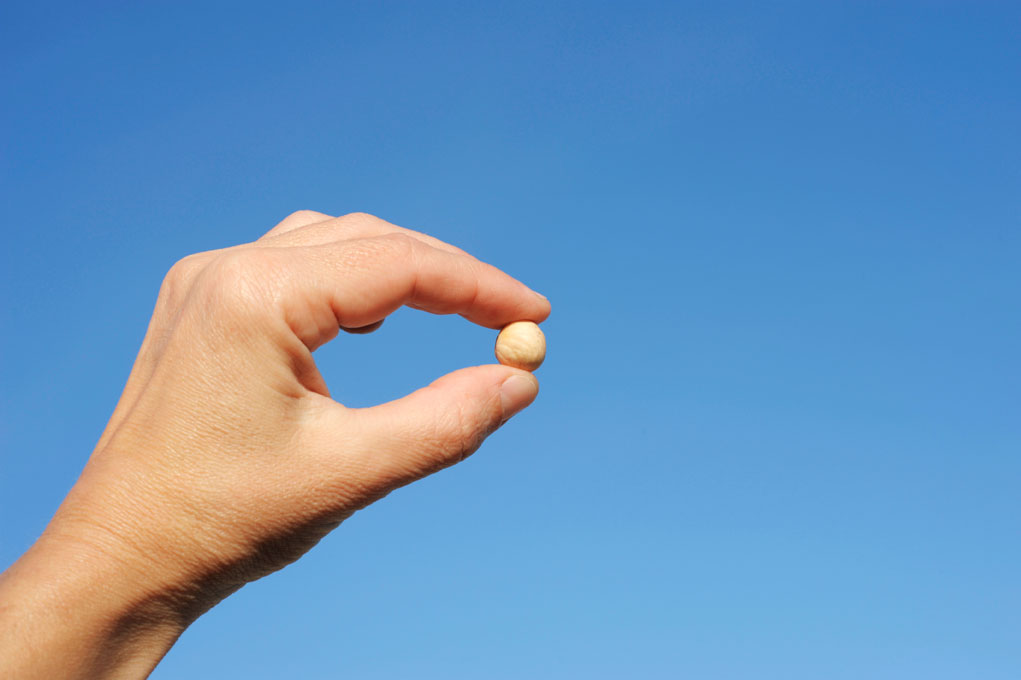2017
Gleaning of hazelnuts for 1 hour, and exposure of the harvest.
I got to Alcover during the harvesting season of the hazelnuts. After the first harvest, more hazelnuts fall from the trees, and they are either collected or left on the ground, according to the yearly price on the market. A hypothetical second harvest is costly, so it doesn’t take place if not profitable. This year the price of hazelnuts is very low, so a second harvest will not be worth it for the farmers.
In this situation lies the contradiction of a production system that makes large use of pesticides to enhance and guarantee the production of goods which are partly left on the ground as waste. An unproductive surplus.
If, from the economical point of view, the working time of a person is quantified in terms of money, for an artist it is very different: an artist has time and is not paid by hour and, moreover, he can make an artwork even out of a handful of hazelnuts, thus partially changing their economic value.
I decided to spend my time gleaning, gathering the leftovers after the first harvest, and exhibit as an artwork the hazelnuts collected in a one-hour time.
How much is time worth? How much a plant and its fruit? Can it all only be seen in terms of economic, exchange value? Or we can also see things following other parameters?
Through photosynthesis plants transform solar energy into chemical energy: the sugars we eat. Plants are our source of vital energy. They have a nutritional value, and also a calorie one, which is an energy value. Of all the fruits we eat, hazelnut is one with the highest content of calories, a concentrate of solar energy.
The idea is to highlight and meditate on the link between the different values possible. The question I am putting on the table is: what could an ecologically sustainable rapport between these values be?



